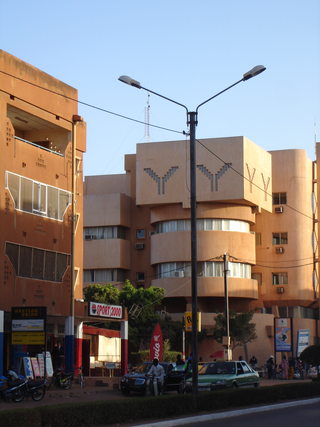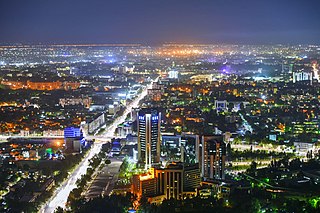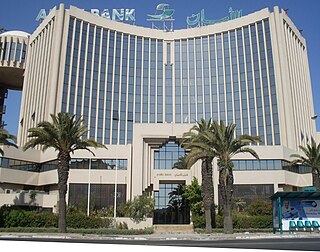
The economy of Armenia grew by 12.6% in 2022, according to the country's Statistical Committee and the International Monetary Fund. Total output amounted to 8.5 trillion Armenian drams, or $19.5 billion. At the same time, Armenia's foreign trade turnover significantly accelerated in growth from 17.7% in 2021 to 68.6% in 2022. GDP contracted sharply in 2020 by 7.2%, mainly due to the COVID-19 recession and the war against Azerbaijan. In contrast it grew by 7.6 per cent in 2019, the largest recorded growth since 2007, while between 2012 and 2018 GDP grew 40.7%, and key banking indicators like assets and credit exposures almost doubled.

The economy of Burkina Faso is based primarily on subsistence farming and livestock raising. Burkina Faso has an average income purchasing-power-parity per capita of $1,900 and nominal per capita of $790 in 2014. More than 80% of the population relies on subsistence agriculture, with only a small fraction directly involved in industry and services. Highly variable rainfall, poor soils, lack of adequate communications and other infrastructure, a low literacy rate, and a stagnant economy are all longstanding problems of this landlocked country. The export economy also remained subject to fluctuations in world prices.
Bankruptcy is a legal process through which people or other entities who cannot repay debts to creditors may seek relief from some or all of their debts. In most jurisdictions, bankruptcy is imposed by a court order, often initiated by the debtor.

The economy of Cameroon was one of the most prosperous in Africa for a quarter of a century after independence. The drop in commodity prices for its principal exports – petroleum, cocoa, coffee, and cotton – in the mid-1980s, combined with an overvalued currency and economic mismanagement, led to a decade-long recession. Real per capita GDP fell by more than 60% from 1986 to 1994. The current account and fiscal deficits widened, and foreign debt grew. Yet because of its oil reserves and favorable agricultural conditions, Cameroon still has one of the best-endowed primary commodity economies in sub-Saharan Africa.

Tajikistan, officially the Republic of Tajikistan, is a landlocked country in Central Asia. Dushanbe is the capital and most populous city. Tajikistan is bordered by Afghanistan to the south, Uzbekistan to the west, Kyrgyzstan to the north, and China to the east. It is separated from Pakistan by Afghanistan's Wakhan Corridor. It has a population of approximately ten million.

The economy of Tajikistan is dependent upon agriculture and services. Since independence, Tajikistan has gradually followed the path of transition economy, reforming its economic policies. With foreign revenue precariously dependent upon exports of cotton and aluminium, the economy is highly vulnerable to external shocks. Tajikistan's economy also incorporates a massive black market, primarily focused on the drug trade with Afghanistan. Heroin trafficking in Tajikistan is estimated to be equivalent to 30-50% of national GDP as of 2012.

The economy of Uzbekistan, formerly a Soviet-style command economy, has undergone changes that align more with a market economy. Under the administration of Islam Karimov currency conversion capacity was restricted, imports were controlled and Uzbekistan's borders with neighboring Kazakhstan, Kyrgyzstan, and Tajikistan were sporadically closed. Since the election of President Shavkat Mirziyoyev, Uzbekistan economic and social reforms have been implemented to boost growth and modernize the country. International Financial Institutions, including EBRD, Asian Development Bank and the World Bank, are supportive of the reform process and increased their presence in the country.

The economy of Tunisia is in the process of being liberalized after decades of heavy state direction and participation in the country's economy. Prudent economic and fiscal planning has resulted in moderate but sustained growth for over a decade. Tunisia's economic growth historically has depended on oil, phosphates, agri-food products, car parts manufacturing, and tourism. In the World Economic Forum Global Competitiveness Report for 2015–2016, Tunisia ranks in 92nd place.

Dushanbe is the capital and largest city of Tajikistan. As of March 2024, Dushanbe had a population of 1,564,700, with this population being largely Tajik. Until 1929, the city was known in Russian as Dyushambe, and from 1929 to 1961 as Stalinabad, after Joseph Stalin. Dushanbe is located in the Gissar Valley, bounded by the Gissar Range in the north and east and the Babatag, Aktau, Rangontau and Karatau mountains in the south, and has an elevation of 750–930 m. The city is divided into four districts, all named after Persian historical figures: Ismail Samani, Avicenna, Ferdowsi, and Shah Mansur.

Vahdat is a city in western Tajikistan, on the bank of the Kofarnihon River, 21 km east of Dushanbe. It was previously called Yangi-Bozor (1927–1936), Orjonikidzeobod and Kofarnihon (1993–2006). Its population is estimated at 43,200 for the city proper and 342,700 for the city with the outlying communities (2020). Vahdat was the focus on international attention in 2019 when a riot occurred in the city's prison, believed to be instigated by members of Islamic State, which led to the deaths of three guards and 29 inmates.
A bailout is the provision of financial help to a corporation or country which otherwise would be on the brink of bankruptcy. A bailout differs from the term bail-in under which the bondholders or depositors of global systemically important financial institutions (G-SIFIs) are forced to participate in the recapitalization process but taxpayers are not. Some governments also have the power to participate in the insolvency process; for instance, the U.S. government intervened in the General Motors bailout of 2009–2013. A bailout can, but does not necessarily, avoid an insolvency process. The term bailout is maritime in origin and describes the act of removing water from a sinking vessel using a bucket.

The National Bank of Tajikistan is the central bank of Tajikistan.
Internet in Tajikistan became present within the country during the early 1990s. Tajikistan had just become independent in 1992, with Emomali Rahmon as the new ruler, when the internet was introduced to the country. Nevertheless, it was after over a decade that the country’s internet became more accessible. The history of the internet’s foundation in Tajikistan extends from 1992 to present-day Tajikistan. By 2009, internet penetration had developed since the initial conception of the internet in Tajikistan and Internet Service Providers (ISPs) had increased in number. In terms of the ISPs, Tajikistan primarily relied upon satellite-based connections using Discovery Global Networks.

The following outline is provided as an overview of and topical guide to Tajikistan:

Tajik National University is the largest university and the only national university in Tajikistan. It has been ranked as one of the most prestigious universities in Central Asia since its inception.

The Australian government debt is the amount owed by the Australian federal government. The Australian Office of Financial Management, which is part of the Treasury Portfolio, is the agency which manages the government debt and does all the borrowing on behalf of the Australian government. Australian government borrowings are subject to limits and regulation by the Loan Council, unless the borrowing is for defence purposes or is a 'temporary' borrowing. Government debt and borrowings have national macroeconomic implications, and are also used as one of the tools available to the national government in the macroeconomic management of the national economy, enabling the government to create or dampen liquidity in financial markets, with flow on effects on the wider economy.
AtaBank was one of the largest commercial banks in Azerbaijan established in 1993. It was a subsidiary of ATA Holding. The bank opened its first branch out of the capital city in Khachmaz in 2003. It had 19 branches and 2 divisions across the country. The financial reports of AtaBank were audited by the Deloitte.

Atommash («Атоммаш») is a multidisciplinary engineering company located in Volgodonsk, Rostov Oblast, Russia. It was established in 1976 as a nuclear engineering corporation. Following privatization and bankruptcy in 1999, the industrial facilities of the enterprise were owned and managed by ZAO Energomash–Atommash, a part of the diversified engineering company Energomash.

Corruption in Tajikistan is a widespread phenomenon that is found in all spheres of Tajik society. The situation is essentially similar to that in the other former Soviet republics of Central Asia. Reliable specifics about corruption can be difficult to come by, however, as can hard information about the effectiveness of supposed anti-corruption initiatives.
Debt-trap diplomacy is a term to describe an international financial relationship where a creditor country or institution extends debt to a borrowing nation partially, or solely, to increase the lender's political leverage. The creditor country is said to extend excessive credit to a debtor country with the intention of extracting economic or political concessions when the debtor country becomes unable to meet its repayment obligations. The conditions of the loans are often not publicized. The borrowed money commonly pays for contractors and materials sourced from the creditor country.













